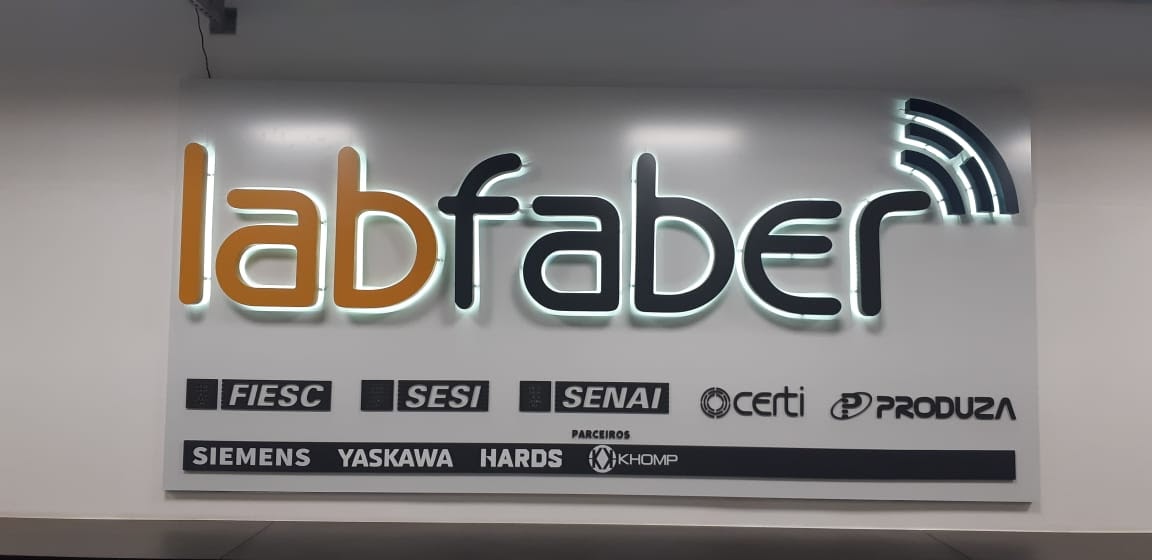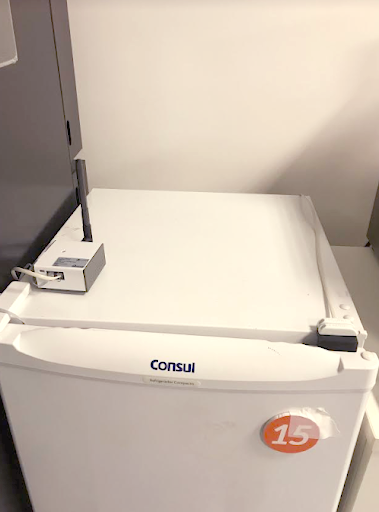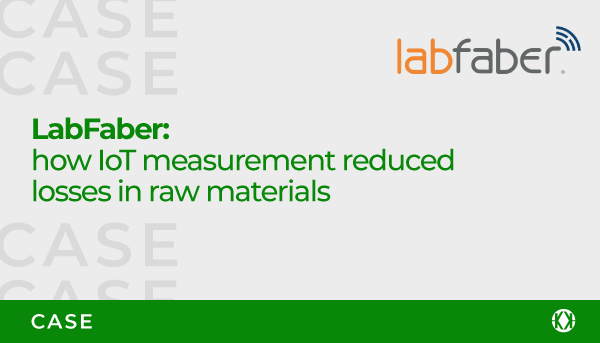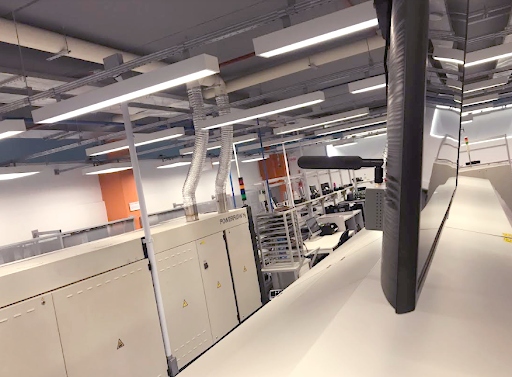Upon entering LabFaber, located in Florianópolis, the attentive observer will immediately notice the presence of the Khomp brand being credited as a technology partner. With its “Laboratory-Factory” format, the innovative CERTI and FIESC spaces invite programmers and engineers to roll up their sleeves and get to work on digital solutions to meet the industry’s specific demands.

In less than a year of operation, LabFaber has attracted the attention of more than 200 companies, and led them to give up on maintaining their own equipment to invest in access to one of the country’s most modern infrastructure environments. In that space, among robust machinery and high tech devices, projects related to manufacturing, robotics, automation and artificial intelligence have been developed, with Khomp as an important element in the support for the Internet of Things.
We spoke with Alexandre Watanabe, a development engineer for the CERTI Foundation, to get an understanding of how this ecosystem functions in practice and why the capture of data in real time with Khomp IoT devices plays an important roll in the consolidation of the environment as a reference in 4.0 technology.
The challenge: To measure temperature/humidity to avoid waste
All electronics industries employ strict controls in order to guarantee production quality and the continuation of structured processes. Things are no different at LabFaber. The demand for internal measurement is a result of a commitment to the delivery of projects.
“The IoT Line from Khomp has helped us measure a lot of things. Starting with the temperature of the production environment itself. But it doesn’t stop there: some components used in the assembly of electronic boards are sensitive to humidity and strict rules must be followed for packaging and storage. If not, they can be damaged during assembly. This means that environmental monitoring has an impact on our business’s bottom line,” says Alexandre.
And we don’t have to go far to find another good example: there are IoT sensors involved in the control of solder paste. Stored in a refrigerator, the temperature must be maintained between 0° and 10°. The slightest instability that occurs has an impact on the viscosity of the paste and, consequently, on the quality of the soldering.

Advantages perceived during implementation
Finding qualified suppliers in the Internet of Things isn’t one of the easiest jobs. With national support and assistance, the search can take quite some time. After finding out about Khomp, LabFaber had no doubts about replacing its old sensing equipment in order to be able to take advantage of all the benefits of a technology that is completely focused on the principles of digital transformation.
“Without a doubt, one of the greatest benefits that the Khomp IoT line offers is that all of its equipment is wireless. The old sensors that were installed in the laboratory required shielded cables. What is more, the ease of installation is a major point in favor of the implementation of a system that is more responsive.”
Results achieved
The most recent edition of IoT Snapshot, a study that tracks the level of adherence to IoT in the Latin American market, highlights a report on the principal benefits recognized by companies that have included the Internet of Things in their daily routines. Chief among them are operational efficiency and visibility of data for decision making. Benefits observed at LabFaber.
“Having data available on the network for monitoring operations was the first and most significant result that we achieved. But we’ve already observed developments related to the integration of data with systems at LabFaber and a greater distribution of sensors at more points. Through this, we are able to obtain complete control over our processes.”
Looking ahead: the road to innovation
The Internet of Things is an area that continues to grow in vertical industries, agribusiness, smart cities, health and the corporate world. The IoT Snapshot report cited earlier shows that this subject is already relevant to the agenda of 42% of the companies in the nation. However, the forecast is that over the next 3 to 5 years, this number will increase to 76%. There is only one direction: innovation.
“Over the past few years, I’ve noticed a great interest from companies of all sizes in embarking on the journey of implementing the industry 4.0 model. And for each of them, I always recommend that they make a technology road map in order to understand how to transform the data they collect into information that is useful for decision making. This is how we improve processes and automation that will lead to a new era on the factory floor,” sums up the engineer.
Would you like to know about the Khomp IoT Line?
To understand all of the functions offered by the Khomp IoT Line, consult the product page and/or our Commercial Consultants.
Subscribe to the Khomp newsletter to receive more articles on technologies that will enable you to implement your own IoT project.

